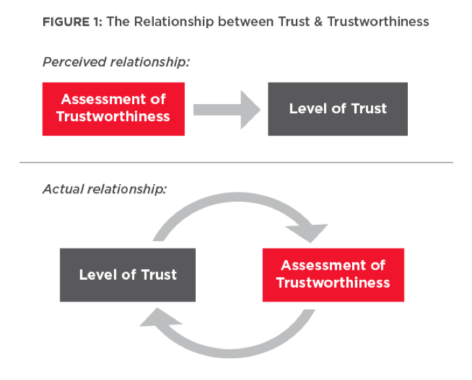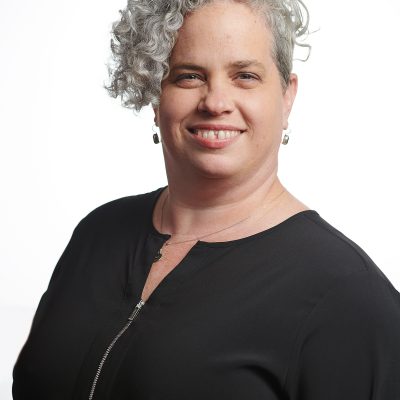
While Americans’ faith in news media overall has been falling, they tend to trust the media that they like and pay for. So, in an effort to increase consumption of reliable journalism, how can funders support the production of trustworthy news?
This was the question addressed by speakers in the first of three webinars hosted by Media Impact Funders to examine ways that foundations can help to combat misinformation. Kelly Born of the William and Flora Hewlett Foundation, who organized the series and is a member of MIF’s board, kicked off the webinar by explaining that funders are pursuing various solutions to the problem of “fake news.” She described interventions that target the production, distribution, and consumption of information, noting that there is “no silver bullet.” To consider solutions on the production end of the process, she invited Josh Stearns of the Democracy Fund to curate this first webinar in the series.
Watch the first webinar below, and register here for forthcoming webinars on Nov. 2 and Dec. 14.
 Stearns, who is the association director of the Democracy Fund’s Public Square Program, has been working to understand issues of trust in online media for the past several years. He was one of the founders of First Draft News—a network of more than 100 newsrooms working to create more trustworthy information, now based at Harvard’s Shorenstein Center—and more recently has been focused on understanding what it takes to rebuild relationships between the public and the press. Read more about his perspective on what the Democracy Fund has been learning here.
Stearns, who is the association director of the Democracy Fund’s Public Square Program, has been working to understand issues of trust in online media for the past several years. He was one of the founders of First Draft News—a network of more than 100 newsrooms working to create more trustworthy information, now based at Harvard’s Shorenstein Center—and more recently has been focused on understanding what it takes to rebuild relationships between the public and the press. Read more about his perspective on what the Democracy Fund has been learning here.
Stearns observed that trust-building is a complex process that extends beyond simply producing verifiable journalism. Research that the Democracy Fund commissioned FSG to conduct suggests that trust is not just a rational process, but has affective dimensions that can be influenced by friends, family and political peers. This means that new engagement strategies are needed to connect audiences with newsrooms, tell more nuanced stories, and “make the truth travel further.”

He then introduced four panelists who are working to do just that:
Joy Mayer, Trusting News:
Based at the University of Missouri’s Donald W. Reynolds Journalism Institute, the Trusting News project examines ways that journalists can bridge the gap between newsrooms and communities. As people’s news diets become more fractured, Mayer explained, simply reporting the news well becomes less and less effective. In addition, it’s important for reporters to be clear about process and to better tell the story of how and why audiences can trust their particular outlet in contrast to the worst of “the media” out there. People are primed to think journalists are biased, Mayer said, and want “transparency of motivation.” Reporters and editors need to take ownership of the problem of mistrust, and clearly communicate their values around independence and informing the public. Learn more about newsrooms can do this successfully with these worksheets from the Trusting News research team.
Sarah Alvarez, Outlier Media:
A Detroit-based news and information service for low income news consumers, Outlier Media is designed to deliver “high-value data journalism” to the most underserved news consumers via mobile phones. Alvarez explained that she been developed this process for high-touch beat reporting while she was a John S. Knight journalism fellow at Stanford. It’s designed to combat misinformation by addressing knowledge gaps around the most urgent issues that plague low-income news consumers. “Information gaps are where accountability goes to die,” said Alvarez. To find her audience, she buys batches of cell phone numbers, and texts locals to invite them to send questions and issues about housing, which her research has determined is the biggest issue for Detroit residents. What begins as a bot-driven conversation (powered by the GroundSource platform) then often becomes a personal one, in which Alvarez investigates the respondent’s question and answers it. Sometimes she then moves on to report further for local publications. So far, the response has been good, and she’s hoping to demonstrate that this model is replicable for other issues and in other locations. “People want accountability, and that’s what I want,” she said, “and that’s very hopeful because it means people still believe in institutions and in the power of journalism”
David Bornstein, Solutions Journalism Network:
Too often, reporters take an “it bleeds, it leads” approach to journalism, which is demoralizing and leaves residents in low-income neighborhoods feeling stigmatized. What’s needed, Bornstein said, is a “mindset shift,” in which news does not just hold people accountable, but shows how they’re responding to problems in good faith. The Solutions Journalism network trains reporters how to take this approach with the same rigor as investigative journalism but an orientation towards helping to improve communities. “Trust is not just a function of being accurate,” he said, “but a function of relationships. I don’t care that you know until I know that you care.” He cited several successful examples of Solutions Journalism partnerships, including the Education Lab in Seattle, a series examining radicalization of Somali youth in Minnesota and what might mitigate it, and The Poverty Puzzle in Chattanooga, a finalist for the Pulitzer. (See these and other examples here.) The impact of these efforts includes powerful responses from community members, and a “miraculous civility” in the comments section, said Bornstein, who also noted that the Tow Center for Digital Journalism had conducted research on how this approach positively engages stigmatized communities. This approach might also be effective in addressing partisanship, he said, which is often a function of powerless and lack of efficacy which “creates rich fodder for people to be vulnerable to misinformation.”
Emily Goligoski, Membership Puzzle Project:
A public research project founded by NYU Professor Jay Rosen’s Studio 20 program and Dutch news organization De Correspondent, the Membership Puzzle Project is exploring the relationship between membership, editorial strategy, and audience engagement. The project has been looking at how to adapt not just the business model, but the product and process of journalism, Goligoski explained. The goal is to build a community of practice around new forms of “meaningful and muscular” membership that reflect two-way knowledge exchange. Historically, newsrooms have lacked incentives for members, but now are finding new ways to involve them by asking them to vote on stories, co-report with journalists, and learn more about the investigative news process. It’s important to “rigorously design the social contract,” she said, and to provide members with “unique value rather than utility.” Audiences aren’t interested in swag or “insider status,” but rather seek quality news and want others to benefit from information—a finding she called “hope-inducing. Successful membership programs therefore foster “belonging rather than exclusivity.”
In the next webinar, which Born of Hewlett will host, speakers will discuss the role that technology platforms are playing in amplifying mis/disinformation and efforts to mitigate this. Speakers will include Jonathan Albright, the research director at the Tow Center for Digital Journalism; Josh Tucker, the co-director of NYU’s Social Media and Political Participation Lab; and Nate Persily, professor of law at Stanford University. Register here.
